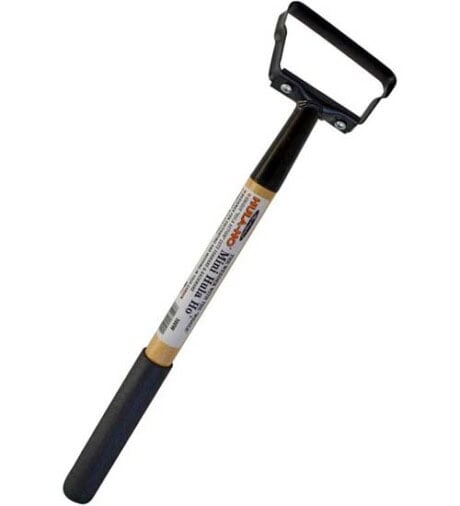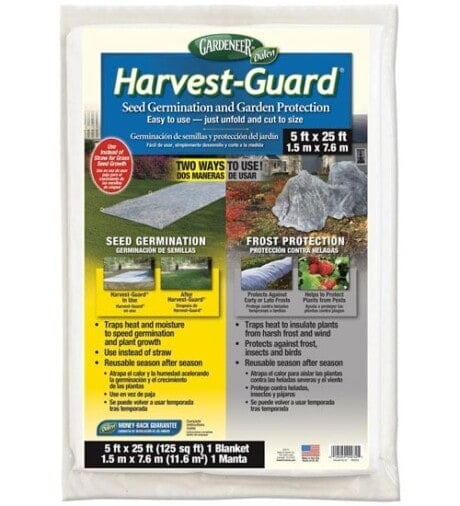Care & Maintenance
Now that your garden is up and growing, a certain level of care is required for it to reach its full potential. Here’s what it takes to produce great tasting, nutritious vegetables all seasons long.


#1 Plant Food
Available Here
Organic Fish & Seaweed (2-3-1)
Use on a regular basis for bigger crops, increased sugars and better blooms.
Learn moreI have a rock garden. Last week three of them died. – Richard Diran
Yippee! You’ve done it. Your garden is now planted and beginning to grow… but you’re work is far from done. Now it’s time for the watering, staking, mulching and overall general garden care to begin. On this page, I’ve put together information that will ensure your garden is a huge success through out the entire growing season. I’ve also provided tips and techniques for extending your harvest when the weather turns cold.
With the right gardening supplies growing local, organic food is easy! Planet Natural has everything you need to get started: heirloom seeds, soils and fertilizers. Need advice? Visit our Vegetable Gardens Blog for the ideas, know-how and practical experience you need to get the job done right.
Watering
Although it’s a simple fact that plants need water, watering itself can be a little tricky. Consistent watering will produce the best results. You may also want to consider drip irrigation or a soaker hose, especially if you have a large garden. This can save up to 60% of the water used by sprinkler systems and will ensure that your plants are watered without getting their leaves wet which will help prevent disease problems.
You’ll know if you’ve over watered if the soil around the plant stem is soaked. Mold or moss growing on the top of your soil is another dead giveaway as is plants with wilting, yellowing or dead leaf margins.
Too little water has a different set of symptoms: wilting of plants, brown or dead leaves, stunted growth. Learn how to avoid water stressed plants here.
Besides direct observation, you can also purchase a moisture meter to help measure whether roots are too wet or too dry.
If you’re watering newly planted seeds, be careful to gently sprinkle water on them. Don’t use a torrent from a hose or a bucket that has enough force to mistakenly wash away seeds or cause them to clump together.
Know Your Soil
Different soil types have different watering needs. However, you don’t need to be a soil scientist to know how to water properly. The following tips are provided by the USDA’s Natural Resources Conservation Service:
- Loosen the soil around plants so it can quickly absorb water and nutrients.
- Use a 1 to 2-inch protective layer of mulch on the soil surface above the root area. Cultivating and mulching reduce evaporation and soil erosion.

A BESTSELLER!
SHITZ & WIGGLES
Savvy growers know redworm castings to be rich in nutrients and beneficial microbes.
$27.95Learn moreVermicompost or Worm Castings are the rich digested soil that red wiggler worms (Eisenia foetida) leave behind. Savvy gardeners know them to be chock-full of organic plant food, plus beneficial microbes — as many as 10,000 different kinds — that aid plant growth and help fight off disease.
Clay soil: Add organic material such as compost or peat moss. Till or spade to help loosen the soil. Since clay soil absorbs water very slowly, water only as fast as the soil absorbs the water.
Sandy soil: Add organic material to supplement sandy soil. Otherwise, the water can run through it so quickly that plants won’t be able to absorb it.
Loam soil: The best kind of soil. It’s a combination of sand, silt and clay. Loam absorbs water readily and stores it for plants to use.
Much About Mulch
Mulching — laying down organic materials — serves several purposes:
- Improves soil retention of moisture
- Regulates soil temperature
- Prevents soil from eroding
- Reduces diseases
- Reduces weed growth (must be 3 to 4-inches thick and reapplied to keep weeds down)
Almost any organic matter can be used as mulch materials including hay, straw, leaves, sawdust, paper, bark or grass clippings.
Mulch is best applied in the spring, but don’t do it too early otherwise you’ll delay the soil’s warming. According to the University of Georgia, it’s best to wait until the soil is 65˚F at least four inches deep before applying mulch.
Tip: Pine needles and coffee grounds make great mulch for acid-loving plants such as rhododendrons, azaleas, blueberries, raspberries, strawberries and potatoes.
Keeping Your Garden Healthy — Maintenance
Here are some tips to keep your garden healthy, green and growing to its fullest potential:
Feed the soil and the soil feeds the plants. Healthy soil promotes healthy plants that are more capable of resisting insect and disease problems. Feed the soil with plenty of compost and well-aged manure.

ORGANIC HERBICIDE
AllDown
A SAFE alternative to RoundUp® that's trusted by cities and municipalities.
Learn moreA SAFE alternative to RoundUp! AllDown Organic Herbicide — a 20% vinegar weed killer, plus citric acid — is the product to reach for when you’re tempted to give up or resort to chemicals.
Control weeds. Weeds are a problem in and of themselves, but they also harbor insects and disease. If you weed regularly, particularly at the beginning of the growing season, it should be relatively easy to keep weeds at bay.
Take out your dead. Get rid of rotting or dead vegetation such as leaves, pulled weeds and plant stalks. Dying vegetable matter can be a haven for pests.
Disinfect your tools. Keep diseases out of your garden by routinely disinfecting your tools. This is doubly important if your tools come in contact with diseased plant parts. Visit the University of Georgia College of Agricultural for more information on disease control.
Stay cool. When heat strikes, provide shade to your plants to keep them from wilting. Cheesecloth makes great shade cover.
Provide support. There are several benefits to using plant supports such as trellises, stakes, A-frames and tepees:
- It increases the space in your garden.
- Gives plants more exposure to light.
- Circulates air.
- Makes it easier to prune and harvest.
Pick, pick pick. Harvest vegetables as soon as they are ripe and remove harvested plants. If they are disease-free, add them to the compost pile, or, if appropriate, re-work into the soil.
Keep it clean. Remove and destroy the diseased parts of plants to protect your healthy ones. Find out how much of the plant you need to remove. Sometimes just taking off diseased leaves is sufficient. Depending on the infection, you may have to remove the entire plant.
It’s never too early to start. After you’ve harvested your plants and cleared the debris from your garden, leave the soil bare for a few days and then cultivate in order to prepare for next year’s garden.

Season Extenders
By using materials as simple as a plastic tarp or as elaborate as a fully-automated greenhouse, many vegetable gardeners are working around the weather and getting the most out of their crops.
Season extenders, which protect plants from cold, include:
Cold Frames are another solution. In fact, for some more moderate climates they can make gardening a year-round activity. Most cold frames are nothing more than a painted plywood frame onto which you put old storm windows to serve as the glazing panels.

#1 FROST FABRIC
N-Sulate
Start planting earlier in the season for a longer flowering and growing period.
$14.95Learn moreEnjoy your garden longer! Frost Fabric (N-Sulate) is a medium weight, permeable, UV treated cloth designed to protect plants from frost, cold and freezing temperatures. Protects tender plants by raising the temperature beneath the fabric by 6-8°F.
Row covers simply cover plants with insulating material and keep them from freezing. They can be used in the spring to help start plants sooner or in the fall, to keep them going. Row covers can be made from plastic sheeting or what’s known as “floating row” cover material. One problem with plastic is that it is impermeable, so no air can get in and moisture stays trapped. One way to get around this is to build or buy frames — something as simple as a wire arch — so you can cover your plants with the plastic sheeting, but air can still circulate.
Cloches are like individual greenhouses for plants. There are a lot of ready-made choices available and come in paper or plastic form. You can make your own using something as simple as a cut-up milk jug.
Hotbeds are the next step up from cold frames. They’re simply cold frames with heating cables to keep the soil warm. (In the old days, pre-cable gardeners used fresh manure to heat the hotbed.)
Greenhouses are the original extension devices which you can build or purchase.
If you use season extenders, you will have to re-think your planting and harvest schedules since you will be able to plant sooner and can harvest later. For example, most fall crops should be started in July. Keep in mind that many leafy crops will mature more slowly when started later in the season since the days are growing shorter and sun exposure is less (see Best Garden Veggies to Over-Winter).
Also, reconsider what you want to grow for your second season. Generally you’ll want hardier plants for your fall crop. The toughest of plants, which can actually tolerate light frosts and snow, include Brussels sprouts, cabbage and kale.
















